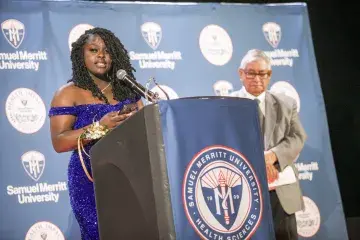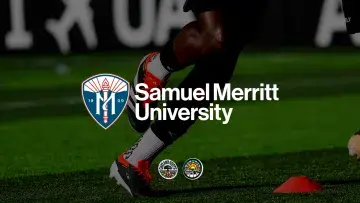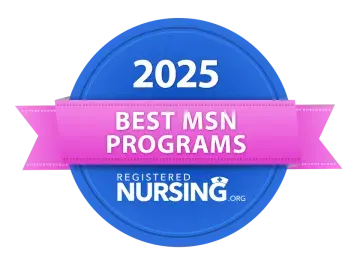Military Veterans Seek to Heal Battle Wounds through Occupational Therapy
Becoming an occupational therapist appealed to Samuel Merritt University (SMU) student Alondra Ammon and recent alumnus Joshua Stoudt because both value a holistic approach to recovery from illness and injury.
Ammon and Stoudt each served in the military and explored other professions before discovering that occupational therapy (OT) offered them the opportunity to connect with patients on an emotional as well as a physical level. 
“This is the field I was meant to be in all my life,” said Ammon, pictured at right . “I’m helping people be able to function to the best of their ability so they can live to their fullest potential.”
Both veterans say they would like to someday use their OT skills to help veterans recover from amputations, traumatic brain injuries and post-traumatic stress disorder (PTSD).
Occupational therapy was introduced in the 18th century as a way to treat mental illness by using music, physical exercise and work to improve a patient’s ability to perform activities of daily living. After World War I, occupational therapists were called on treat the physical injuries that soldiers sustained in battle.
“Occupational therapy is much more than physical rehabilitation,” Stoudt said. “It also takes into account a patient’s emotional and spiritual needs and find activities that are meaningful to patients so they’re able to recover from adversity.”
In March, Ammon and Stoudt were two of more than 30 military veterans currently studying at SMU across all programs, with more expected to enroll later this year.
Growing up as one of eight children of a single mother who worked three jobs, Ammon said college didn’t seem like an option so she joined the Air Force when she was 18. She worked as a dental assistant on a base in North Dakota that prepared soldiers for deployment after 9/11.
In the years that followed her military service, Ammon trained to become a dental hygienist and a massage therapist. Giving in to her desire to travel, she later joined the ground crew of the MetLife blimp known as “Snoopy One,” an airship that films sporting events in Florida and Texas.
Once Ammon settled down in California, she earned a bachelor’s degree in kinesiology and began the MOT program at SMU last year, also serving as a President’s Ambassador. In the future, she said she hopes to work with vets struggling with battlefield injuries.
“I think they need help, but it’s a hard thing for veterans to reach out,” said Ammon, who said her sister has PTSD after deployments in Iraq and Afghanistan.
Like Ammon, Stoudt enlisted in the military right after high school and spent two years as an Army cavalry scout. 
“It gave me the self discipline I needed to get through college,” said Stoudt.
After earning a master’s degree in psychology, Stoudt worked at a residential substance abuse facility and then at a regional center that serves people with developmental disabilities. He soon found that rather than connecting people to services, he wanted to become a service provider.
Stoudt, pictured at right, assessed his skills — problem solving, mental health knowledge, ability to work well with his hands, and make people feel comfortable— and said they all added up to OT.
Stoudt said he wants to help veterans like his father, who served as a medic in Vietnam and continues to suffer from PTSD. He noted that the suicide rate is high among veterans and that they can benefit from OT’s holistic approach to healing the mind and body.
“OT helps people engage in activities to their maximum ability,” said Stoudt. “Through that engagement, a kind of magical thing happens which gives them a renewed sense of self-confidence that alone has the ability to heal.”


